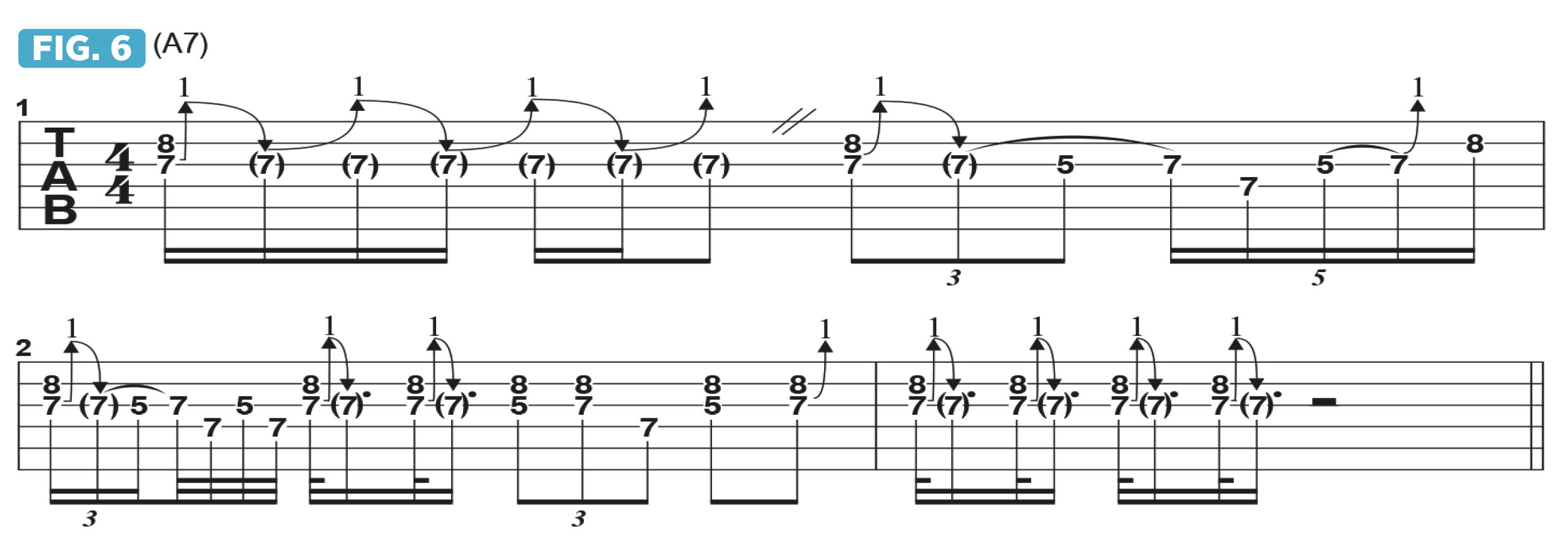How to get more from oblique bends, a staple of blues-rock guitar playing
Jimi Hendrix, Eric Clapton and Johnny Winter all used this technique to great effect – here's how you can make the most of it in your solos

Guitar players are well aware that three of the most reliable techniques for creating expressive solos are string bending, vibrato and the combination of bending with vibrato.
One exceptionally cool and useful bending technique is what’s known as an oblique bend. This is where you play two notes on two different strings and bend one while the other remains unbent.
A basic example of an oblique bend is a unison bend, which is performed by bending a note on one string up to match the pitch of an unbent note on the next higher string.
For example, fret a D note with your ring finger on the G string’s 7th and an E note with your index finger on the B string’s 5th fret; sound the two notes then proceed to bend the D note up a whole step to E.
Oblique bends work in the same way but with different pitches sounded on each of the strings utilized. Figure 1, bar 1, illustrates an oblique bend built from a D note, fretted with the ring finger at the 7th fret on the G string, bent up one whole step to E, sounded simultaneously with a G note, fretted with the pinkie on the B string’s 8th fret. Within the context of this lesson, all examples are played over an implied A7 chord. Bar 2 of Figure 1 continues a typical blues-type phrase played over A7.
In Figure 2, the two strings are sounded together, starting with a whole-step bend, release and re-bend of the D note on the G string while the high G note on the B string is played along with it.
A technique Jimi Hendrix used often was to begin with the oblique bend and then repeatedly release the bend into a pull-off, and then cycle that figure over and over, as demonstrated in Figure 3.
All the latest guitar news, interviews, lessons, reviews, deals and more, direct to your inbox!
Another twist is to follow the release of the bend on the G string with an A root note on the D string’s 7th fret, after which C, G string/5th fret, is hammered up one whole step to D and then the phrase is repeated, as shown in Figure 4. In this example, the notes of the oblique bend are sounded in succession instead of together.
Figure 5 illustrates this Hendrix-type phrase played in a repeating fashion.
Another interesting variation is to begin with a whole-step pre-bend from D to E on the G string while simultaneously sounding the high G note above it, as illustrated in Figure 6.
Guitarists such as Johnny Winter and Eric Clapton often create syncopated rhythms with oblique bends by sounding the bent note first then repeatedly picking the unbent note on the higher string.
This is shown in Figure 7. After bending D to E on the G string, the high G note on the B string is repeatedly picked either four or two times in alternating fashion through bars 1 and 2, and the phrase then resolves with a T-Bone/Jimi/Eric/SRV-type lick.
Guitar World Associate Editor Andy Aledort is recognized worldwide for his vast contributions to guitar instruction, via his many best-selling instructional DVDs, transcription books and online lessons. Andy is a regular contributor to Guitar World and Truefire, and has toured with Dickey Betts of the Allman Brothers, as well as participating in several Jimi Hendrix Tribute Tours.







